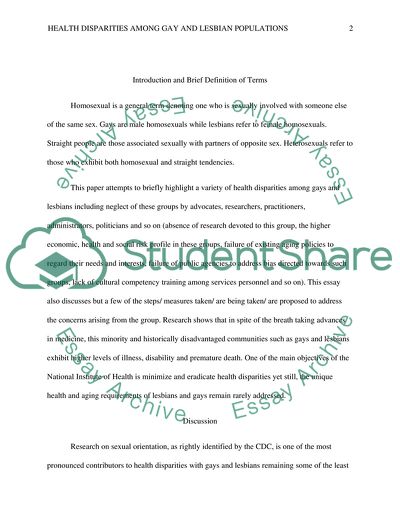Cite this document
(Health Disparities among Gay and Lesbian Populations Research Paper, n.d.)
Health Disparities among Gay and Lesbian Populations Research Paper. https://studentshare.org/health-sciences-medicine/1832773-health-disparities-among-gay-and-lesbian-populaion
Health Disparities among Gay and Lesbian Populations Research Paper. https://studentshare.org/health-sciences-medicine/1832773-health-disparities-among-gay-and-lesbian-populaion
(Health Disparities Among Gay and Lesbian Populations Research Paper)
Health Disparities Among Gay and Lesbian Populations Research Paper. https://studentshare.org/health-sciences-medicine/1832773-health-disparities-among-gay-and-lesbian-populaion.
Health Disparities Among Gay and Lesbian Populations Research Paper. https://studentshare.org/health-sciences-medicine/1832773-health-disparities-among-gay-and-lesbian-populaion.
“Health Disparities Among Gay and Lesbian Populations Research Paper”. https://studentshare.org/health-sciences-medicine/1832773-health-disparities-among-gay-and-lesbian-populaion.


